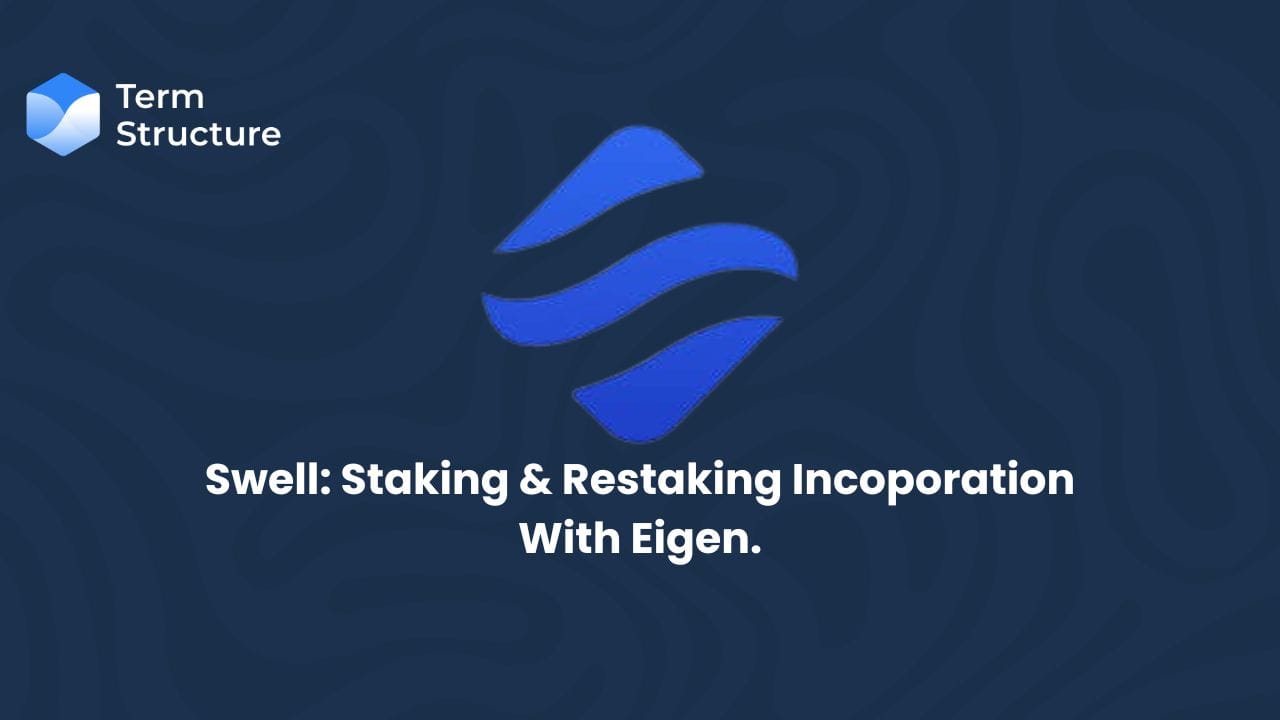Swell: Staking & Restaking Incorporation With EigenLayer

Introduction
In DeFi, liquid staking and restaking have become game-changers, offering a more flexible way to stake crypto. This innovative approach has enabled investors to accumulate billions of dollars in a short time by buying and holding their assets. Among these protocols, Swell Network stands out by uniquely combining both liquid staking and liquid restaking on a single platform. In this article, we will explore what Swell Network is and compare it with other liquid staking protocols to evaluate its potential.
What is the Swell Network?
Swell Network is a DeFi protocol on Ethereum in collaboration with EigenLayer. It focuses exclusively on liquid staking, allowing users to stake their ETH and receive swETH, which can be further restaked to receive rswETH. Launched in 2023, Swell Network has attracted significant liquidity, with over $1 billion in assets locked.
Below are the steps for using Swell Network:
- Stake ETH to receive swETH: Users deposit their ETH and receive an equivalent amount of swETH.
- Restake swETH to earn rswETH: Users can restake their swETH to receive rswETH tokens to earn additional rewards.
- Use rswETH in liquidity mining: By pairing rswETH with another token and locking the pair into a liquidity mining pool, users can earn more rewards.
- Earn up to 36% APR: Through these staking and restaking mechanisms, users can earn up to 36% annual percentage return
Comparing Kelp, EtherFi, and Swell
Kelp DAO, EtherFi, and Swell are prominent liquid restaking protocols in the DeFi sector, each offering unique features and benefits. Let’s discuss the differences and similarities among these protocols.
Differences:
Kelp DAO:
- TVL: Holds a total value locked (TVL) of over $628 million, with more than 15,000 rsETH holders.
- Token: Enables staking of LSTs in exchange for rsETH, which represents fractional ownership of staked assets.
EtherFi:
- TVL: Holds a total of 1.51M ETH, valued at over $5.90B.
- Token: eETH can be used across several DeFi protocols to maximize returns for holders.
Swell:
- Token: The rswETH token enables users to earn ETH staking rewards and native token restaking yield without locking up liquidity.
- TVL: Swell has a TVL of more than $150 million.
Similarities:
Community Engagement: Swell, EtherFi, and Kelp DAO have an active community with the goal of making the path to participate in liquid restaking easier for users.
Security Measures: Security is built on audit and risk management systems to guarantee the validity of protocols in each platform.
Native Tokens: They all have some native tokens (rsETH, eETH, rswETH) which represent part of ownership or the asset that generates yield in each ecosystem.
Restaking Options: All 3 platforms enable staking and re-staking to generate more rewards.
Conclusion
In summary, the DeFi landscape has been revolutionized by liquid staking and restaking, offering investors greater flexibility and significant returns. Among the leading protocols, Kelp DAO, EtherFi, and Swell Network each bring unique strengths to the table. Kelp DAO excels in flexibility and accessibility, featuring decentralized governance and a native token. EtherFi stands out as the largest and most liquid staking pool, supported by numerous validators and users. Swell Network differentiates itself with zero fees and versatile collaborations, making it a standout choice for liquid restaking in DeFi protocols. Together, these platforms highlight the diverse opportunities available in liquid restaking.

